Psychology studies that go viral are likelier to be bogus At the start of the 21st century, psychology was starting to get a little out of hand. Studies conducted on small groups of college undergraduates were growing more commonplace and increasingly being used to explain just about every aspect of human behavior. Their findings filtered into talks by motivational speakers, bland self-help books, and poppy magazine articles, turning lots of people into well-informed (or so they thought) armchair psychologists. But in the early 2010s, the bubble burst. When scientists attempted to replicate prior research, performing the experiments again with rigorous methods and new subjects, they were broadly unsuccessful. In about half of the repeated experiments, the flashy findings disappeared. Even apparently established phenomena like social priming and “power posing” were not immune from debunking. Psychology’s heyday transformed into a “replication crisis.” Continued here |
�
�
The Himalayas' ancient earthquake-defying design In 1905, a deadly earthquake rocked the landscape of Himachal Pradesh, an Indian state in the western Himalayas. Sturdy-looking concrete constructions toppled like houses of cards. The only surviving structures were in towns where the residents had used an ancient, traditional Himalayan building technique known as kath kuni. On a warm Tuesday afternoon, I was headed towards one of them: Naggar Castle, which was built more than 500 years ago as the seat of the region's powerful Kullu kings, and which remained standing, unscathed, after that calamity. Continued here |
Schmilka: The progressive German town stuck in the past The half-timbered houses, the isolated location deep in eastern Germany's forested hinterlands, the eerie rock pinnacles bounding the town on one side and the tempestuous Elbe River on the other – throw in an evil witch and Schmilka would be straight out of a 19th-Century Brothers Grimm fairy tale. Or, at least, of that age: the buildings go back around two centuries, the food and beer are prepared using techniques just as old, and I had to run up and down the town's one street (cobblestoned, of course) to find a wi-fi signal. Talk about a time warp. "Schmilka used to be a holiday village 200 years ago," said Andrea Bigge, a local art historian. It is again, she added, but it still feels like it exists in that era. Continued here |
Spain's ingenious fairy-tale houses Deep in Spain's north-western corner, the windswept Ancares mountains are dotted with centuries-old houses that look straight out of a fairy tale – or the Asterix and Obelix comic-book series – but that are cleverly suited to the harsh realities of this remote region. Known as pallozas, the round huts are made of stone and topped with a teardrop-shaped roof of rye straw. There are more than 200 scattered among Galicia's and Castile-León's rural villages, including Piornedo, Balouta, O Cebreiro and Balboa. Many of these homes were built 250 years ago, though their architectural roots stretch back millennia – some historians contend that pallozas are pre-Roman, an evolution of Celtic and Iron Age constructions. Continued here |
The Maine lake full of sunken steamboats "A hundred years ago there were dozens of these things cruising around here," said a man who'd suddenly appeared next to me at the dock as I watched the approaching steamboat. He'd startled me out of my reverie, my gaze caught somewhere between the shimmer that dances across Moosehead Lake and the seaplanes taking off toward Mount Katahdin. I grew up in the US state of Maine at a smaller lake not far from here, and I spent many summers taking day trips to Moosehead Lake with my family. But this was the first time I boarded the historical Steamboat Katahdin, the last of a once-numerous fleet that used to ferry hordes of well-dressed elites from nearby train depots to the area's luxury resorts for their summer holidays. Continued here |
Tuscany's mysterious 'cave roads' Wildflowers grazed my legs as I hiked down from the volcanic-rock hilltop fortress of Pitigliano into the Tuscan valley below. At the base of the hill, I crossed a burbling stream and followed a winding trail as it inclined. All of a sudden, I was walled in. Huge blocks of tuff, a porous rock made from volcanic ash, rose as high as 25m on either side of the trench I found myself in. I felt spooked – and I'm not the only one who's felt that way in vie cave like this. These subterranean trails have been linked with lore of devils and deities for centuries. Continued here |
Meta's Gruesome Content Broke Him. Now He Wants It to Pay In 2019, Daniel Motaung moved from South Africa to Nairobi, Kenya, for a job at an outsourcing company called Sama. He had been hired for his Zulu language skills, but was unsure of exactly the kind of work he'd be performing. It was only after he started working, he claims, that Motaung discovered he would be spending eight hours or more a day looking at some of the most hideous content on the internet—beheadings, child abuse, suicides—as an outsourced content moderator for Meta. Motaung alleges that he was paid as low as $2.20 an hour to view graphic content that left him with PTSD. He describes it as "emotionally and mentally devastating": "I went in OK and went out not OK," Motaung said in a statement shared by the Real Facebook Oversight Board, a group of independent civil rights advocates and experts. "It changed the person I was." Motaung began to push to form a union that would allow the moderators to advocate for better pay and more support for their taxing work. Just six months into the job, he was fired. So he decided to sue his former employer and Meta. Continued here |
Apple's HomePod Can Hear You. You Might Not Want To Hear It If you buy something using links in our stories, we may earn a commission. This helps support our journalism. Learn more. Please also consider subscribing to WIRED Apple cares a lot about music. Steve Jobs loved it so much that he invented the iPod and iTunes to let us bring all of it everywhere, and personally owned multi-thousand-dollar Finnish speakers in his sparsely-decorated living room. To this day, Apple Music is one of the best-sounding streaming services you can subscribe to thanks to lossless audio support. The headphones it makes, both itself and via Beats, are largely fantastic. Continued here |
Raycast Is the Launcher App Apple Wishes It Made There's very little you can do using your mouse or touchpad that you can't do faster using your keyboard. There are exceptions—graphic design comes to mind—but most of the time this rule holds true. For example: launching a Mac application that's not in your dock. You can open the Applications folder in Finder or Launchpad, then scroll until you find the app you want. Or you can open Spotlight using Command+Spacebar, type the first few letters of the app in question, then hit Enter. The mouse method takes around 30 seconds; the keyboard method takes less than two. This is the kind of trick that, once you learn it, you wonder how you lived without. Continued here |
The Best Budget Phone Plans to Ditch the Big Carriers Subscribing to a cellular plan from the Big Three providers—Verizon, T-Mobile, and AT&T—is akin to owning a high-performance sports car. If you never take it onto a twisty road to unwind it, then what's the point of saddling yourself with such a high monthly payment? The Big Three have piled on the luxuries over the years: 1080p video streaming, generous hot spot plans, complimentary streaming subscriptions, and sky-high data-throttling caps. Yet if you rarely use them, you can save a fair chunk of coin each month by switching over to one of the smaller, lesser-known cellular providers. Mobile virtual network operators (MVNOs) charge cheaper prices because they lease wireless capacity from bigger companies rather than maintaining their own infrastructure. It may not have the money for splashy advertising campaigns, but an MVNO can offer many core features that were once restricted to the big players. Nowadays, it's reasonable to expect all the best cheap phone plans to include 5G network access with the option to use your phone as a Wi-Fi hot spot. These are our favorites. All prices are given for one line per plan. Typically, the cost per line goes down the more of them you have on your plan, up to a limit. Continued here |
Radical idea: Redraw the U.S. map as a nation of city-states Excerpted from Unequal Cities: Overcoming Anti-Urban Bias to Reduce Inequality in the United States Copyright (c) 2023 Columbia University Press. Used by arrangement with the Publisher. All rights reserved. Some blue-sky thinkers are questioning the relationship of cities and existing political boundaries. The modern U.S. economy is really made up of metropolitan regions, not states whose boundaries are arbitrary compared to local economies. A 2009 study identified eleven “megaregions” in the United States with 31 percent of all U.S. counties but 74 percent of the nation’s population and an estimated 80 percent of employment growth by the year 2025. Others have called for a restoration of cities’ annexing powers or greater metropolitan consolidation; reducing suburbs’ power over zoning, housing, and de facto segregated school systems; and limiting poor urban residents’ access to suburban-based jobs. Continued here |
How a device transmits radio waves with almost no power A new ultra-low-power method of communication at first glance seems to violate the laws of physics. It is possible to wirelessly transmit information simply by opening and closing a switch that connects a resistor to an antenna. No need to send power to the antenna. Our system, combined with techniques for harvesting energy from the environment, could lead to all manner of devices that transmit data, including tiny sensors and implanted medical devices, without needing batteries or other power sources. These include sensors for smart agriculture, electronics implanted in the body that never need battery changes, better contactless credit cards and maybe even new ways for satellites to communicate. Continued here |
Vanpowers City Vanture e-bike review: Sleek, streamlined, and hard to define A "city" bike could mean many different things. It could be cheap, so there's less angst when it is almost inevitably stolen. It might be simple, with fewer gears and add-ons because the commutes are short and relatively flat. Or perhaps it's a lighter bike, one more easily hauled onto a curb or up a flight of apartment or office stairs. Continued here |
Proposals but no consensus on curbing water shortages in Colorado River basin In 2007, the seven states that rely on the Colorado River for water reached an agreement on a plan to minimize the water shortages plaguing the basin. Drought had gripped the region since 1999 and could soon threaten Lake Powell and Lake Mead, the largest reservoirs in the nation. Continued here |
American Christianity Is Due for a Revival Our society is secularizing, and Christianity seems to be in long-term decline. But renewal is possible. Upon joining the Presbyterian ministry, in the mid-1970s, I served in a town outside Richmond, Virginia. New church buildings were going up constantly. When I arrived in Manhattan in the late ’80s, however, I saw a startling sight. There on the corner of Sixth Avenue and West 20th Street was a beautiful Gothic Revival brownstone built in 1844 that had once been the Episcopal Church of the Holy Communion. Now it was the Limelight, an epicenter of the downtown club scene. Thousands of people a night showed up for drugs and sex and the possibility of close encounters with the famous of the cultural avant garde. It was a vivid symbol of a culture that had rejected Christianity. Continued here |
The High Tension and Pure Camp of Jurassic Park Jane Yong Kim’s culture picks include the dinosaur blockbuster and a wild-swimming travelogue. This is an edition of The Atlantic Daily, a newsletter that guides you through the biggest stories of the day, helps you discover new ideas, and recommends the best in culture. Sign up for it here. Continued here |
The Institutional Arsonist Turns on His Own Party Donald Trump threatens to use his core skills—peddling conspiracy theories, spreading lies, sowing distrust—against the GOP. It’s begun to dawn on Republicans that they face a potentially catastrophic political problem: Donald Trump may lose the GOP presidential primary and, out of spite, wreck Republican prospects in 2024. Continued here |
"SNL" Went Off the Rails—In the Best Way Bowen Yang didn’t break first, but he was the cast member least able to handle the cascade of giggles that caused yesterday’s final Saturday Night Live sketch of the night to lose total control. Partway through “Lisa from Temecula,” a bit about a woman named Lisa (played by Ego Nwodim) aggressively carving up her “extra-extra-well-done” steak, Yang cracked up, throwing down his prop fork. The host, Pedro Pascal, was already chortling through his lines, as were Nwodim, Devon Walker, and Punkie Johnson. Pascal never finished his last sentence before the segment ended. It was the kind of sketch I replayed as soon as I could, not because it was overwhelmingly funny but because the cast’s fumbles and the audience’s hollering felt brilliantly spontaneous. I noticed Molly Kearney apparently fighting the urge to break by staring intensely at nothing; Nwodim stepping onto Pascal’s leg while sawing her meat after she accidentally knocked over her chair; Yang helplessly signaling the crew for the sketch to wrap up. “Lisa from Temecula” follows in the footsteps of “Debbie Downer” and “Girlfriends Game Night,” sketches that hinged on a simple premise—the former, a visit to Disney World with a naysayer; the latter, a hangout that goes wrong when a woman brings her husband. In such sketches, the jokes aren’t the most compelling part. The cast and audience’s pure, chaotic enjoyment of them is. Continued here |
4 Things to Do Before a Tough Conversation Difficult conversations are, well, difficult. And we all crave tactical advice about how to handle them, what to say, and what not to. But the primary predictor of success in a crucial conversation has less to do with how you use your mouth, and much more to do with what you do before you open it. There are several things you can do to prepare for any type of tricky conversation, whether it’s delivering tough feedback or negotiating a new role. First, connect with your real motives. Ask yourself: What do I really want for me? For the other person? For the relationship? For other stakeholders? Then, recognize and challenge the stories you tell yourself. Turn yourself from a victim to an actor. Turn the other person from a villain to a human. Also, gather the facts about the situation and don’t by sharing your conclusion. Share the facts and premises that led you to your conclusion. Lay out your data. Explain out the logic you used to arrive where you did. Lastly, be curious. Think through your position enough to have confidence that it has merit. But also muster enough humility to be interested in any facts or logic that might improve your conclusion. His work performance had made the conclusion inescapable for years, but he was so darned nice and likeable that I gave him the benefit of the doubt. Not only did I like him, I also knew his income was crucial to his family. Furthermore, over the nine years he worked for me, his income had grown to the point that he would find it difficult to get comparable compensation. I hated the thought of the hardship that letting him go might cause. And yet Randy (which is not his real name) had shown himself to be entirely incompetent at managing people and projects. He completed projects based on whoever was nagging him the most not on the importance to the business of the commitments he’d made. You knew he would agree to anything, but you never knew if you’d actually get it. His team was in a constant state of whiplash as his panicked phone calls would often reset their entire agenda. Continued here |
The Unphotographabe: Walt Whitman on Birds Migrating at Midnight There is singular magic to seeing a mass of creatures move in unison along the vector of a common purpose, as if commanded by a single mind. In those ultimate instances of unselfing, we are reminded that all of nature is one grand synchrony, in which we are mere particles existing in conviviality and consanguinity with every other particle. A century and a half before Richard Powers painted in words the majestic migration of sandhill cranes, Walt Whitman (May 31, 1819–March 26, 1892) channels one such spectacle of humbling grandeur in Specimen Days (public library) — the exquisite collection of prose fragments that also gave us his reflections on democracy, music, and the wisdom of trees. Did you ever chance to hear the midnight flight of birds passing through the air and darkness overhead, in countless armies, changing their early or late summer habitat? It is something not to be forgotten. A friend called me up just after 12 last night to mark the peculiar noise of unusually immense flocks migrating north (rather late this year.) In the silence, shadow and delicious odor of the hour, (the natural perfume belonging to the night alone,) I thought it rare music. You could hear the characteristic motion — once or twice “the rush of mighty wings,” but oftener a velvety rustle, long drawn out — sometimes quite near — with continual calls and chirps, and some song-notes. It all lasted from 12 till after 3. Once in a while the species was plainly distinguishable; I could make out the bobolink, tanager, Wilson’s thrush, white-crown’d sparrow, and occasionally from high in the air came the notes of the plover. Continued here |
In Search of the Sacred: Pico Iyer on Our Models of Paradise “The mind is its own place, and in it self can make a Heav’n of Hell, a Hell of Heav’n,” Milton wrote in his immortal Paradise Lost. With these human minds, arising from these material bodies, we keep trying to find heaven — to make heaven — in our myths and our mundanities, right here in the place where we are: in this beautiful and troubled world. We give it different names — eden, paradise, nirvana, poetry — but it springs from the selfsame longing: to dwell in beauty and freedom from suffering. With soulful curiosity channeled in his ever-lyrical prose, Pico Iyer chronicles a lifetime of pilgrimages to some of Earth’s greatest shrines to that longing in The Half Known Life: In Search of Paradise (public library). He begins in Iran, replete with monuments to Omar Khayyām, who built “a paradise of words” with his poems while revolutionizing astronomy — a place of uncommon beauty and uncommon terror, with roots as deep as the history of the written word, and living branches as tangled as the most contradictory impulses of human nature: Continued here |
The New Netflix Password Sharing Rules Are a Masterclass in Delivering Bad News No one quite knows how the changes will affect them, or when. It's very, very clever. Continued here |
Enshrining the Voice gives best chance for Closing the Gap, Albanese says Enshrining a constitutional Voice to parliament will bring better practical outcomes and give the best chance for Closing the Gap, Prime Minister Anthony Albanese will say in a major address on the referendum on Sunday. Albanese will also flatly reject opposition calls for the government to legislate the Voice at once, pointing out that the call from Indigenous people is for it to be in the Constitution. Continued here |
Robberies surge as criminals take advantage of South Africa's power outages The acute energy crisis in South Africa has adversely affected all aspects of the society. Regular and lengthy power outages – which started in 2007 are also contributing to an escalation in the levels of criminal activity, especially street crime. The most recent quarterly crime statistics – have undermined an ailing economy and food security, as well as health and educational outcomes. It has become evident that power cuts added to a significant increase in all robbery categories – for July to September 2022 – compared to the same period in 2021. This corresponded with the most severe power cuts the country had ever experienced. Continued here |
Chinese spy balloon over the US: An aerospace expert explains how the balloons work and what they can see The U.S. military shot down what U.S. officials called a Chinese surveillance balloon off the coast of South Carolina on Feb. 4, 2023. Officials said that the U.S. Navy planned to recover the debris, which is in shallow water. The U.S. and Canada tracked the balloon as it crossed the Aleutian Islands, passed over Western Canada and entered U.S. airspace over Idaho. Officials of the U.S. Department of Defense confirmed on Feb. 2, 2023, that the military was tracking the balloon as it flew over the continental U.S. at an altitude of about 60,000 feet, including over Malmstrom Air Force Base in Montana. The base houses the 341st Missile Wing, which operates nuclear intercontinental ballistic missiles. Continued here |
Higher interest rates, falling home prices and real wages, but no recession: top economists' forecasts for 2023 Visiting Fellow, Crawford School of Public Policy, Australian National University Australia’s Reserve Bank is set to push up rates once again at its first meeting for the year on Tuesday, according to all but two of the 29 leading economists surveyed by The Conversation at the start of 2023. Continued here |
Election violence in Nigeria's south east is threatening to derail voting in the region Oluwole Ojewale managed the nationwide election security threat assessment programme during the 2019 general election in Nigeria. Freedom C. Onuoha is a security sector consultant and recently co-facilitated the training of divisional police officers in the south-east zone on election security management for the 2023 general elections. Continued here |
Weed in South Africa: apartheid waged a war on drugs that still has unequal effects today University of Johannesburg provides support as an endorsing partner of The Conversation AFRICA. Cannabis is being commercialised into a multibillion-dollar global industry and South Africa wants a piece of the pie. In his 2022 state of the nation address, President Cyril Ramaphosa spoke of developing a hemp and cannabis sector to boost the post-COVID economy. Continued here |
Sending Help Instead of the Police in Albuquerque In the southeastern corner of Albuquerque, near a wide mountain pass that opens onto an expanse of arid high plains, Sean Martin and Isaiah Curtis drove toward a Blake’s Lotaburger, a regional fast-food chain. Behavioral-health workers with Albuquerque Community Safety, a new city department, they respond to calls, mostly from 911, about nonviolent crises involving mental health, homelessness, or substance use. A.C.S. responders are trained to connect people from some of the city’s most vulnerable populations with professional help. In doing so, they also reduce those residents’ interactions with local law-enforcement agencies, which in recent years have had the second-highest fatal-shooting rate among major American cities. Martin and Curtis were following a tip from a local nonprofit about a man who’d expressed an interest in housing vouchers. Behind the restaurant, they drove past dirt lots strewn with bottles and clothing. Near a short concrete wall, there were two charred tree stumps. It seemed that someone had set them on fire to stay warm, but the area was deserted. It was late morning at the end of November, and the air temperature hovered around forty degrees. Overnight, it had dropped well below freezing. Continued here |
You Need to Watch the Most Influential James Bond Movie on HBO Max ASAP The Cold War didn’t invent espionage stories. But by the time the conflict ended in 1991, the genre had been completely redefined. The back-and-forth affair encompassed secrets, betrayals, violence, and ideology, a combination that made for box office gold. Throw in some babes, and the iconic figure of the era’s fiction, James Bond, was born. When the Soviet Union collapsed, the narrative was broken. Cold War spies, fictional characters so omnipresent that they became an oft-parodied cliche, were now officially relics of the past. While James Bond had fought a wide array of villains, and at times had even partnered with surprisingly alluring Soviet officials, in the public’s mind the British spy was firmly on one side of the Cold War. Even Russian audiences knew where he stood — in 1962, a Soviet newspaper attacked the first Bond movie, Dr. No, before it even came out, much to the delight of his creator, Ian Fleming. Continued here |
'Superman: Legacy' Will Reinvent the Man of Steel — Everything to Know Look, up in the sky! It’s a new Superman movie coming sooner than you think. On January 31, DC Studios co-chair James Gunn finally pulled back the curtain on the new era of the DC universe. In a slate titled “Chapter One: Gods and Monsters,” the DCU will be more tightly-connected from here on. While two different television shows will serve as an overture to the universe — Creature Commandos and Waller for HBO Max — Gunn says that the true beginning lies in a reboot film, Superman: Legacy, coming in 2025. Here’s everything we know so far about Superman: Legacy. We’ll update this page with more information as we learn it. Continued here |
The Weirdest Sci-Fi Apocalypse on Netflix Reveals a Controversial Field of Medicine The fear of death depicted in White Noise is real — and some studies say magic mushrooms could help treat it. There’s something weird afoot in Netflix’s White Noise — and it’s not what you might think. Continued here |
'Hogwarts Legacy' Release Dates, Early Access, and Preorder Bonuses, Explained Back-to-school season starts early this year. The second week of February marks the launch of the much-discussed role-playing game set in the Harry Potter universe, Hogwarts Legacy. 2023’s already off to a roaring start, with the return of two big franchises in Dead Space and Fire Emblem Engage, and a surprise banger in Hi-Fi Rush. That makes Hogwarts Legacy the next big event on the gaming calendar, but the logistics of when you can actually play are a smidge more complicated than usual. Essentially, your ability to access the game will depend on your platform, version, and whether or not you decided to preorder a copy. Let’s break it down. Strap in, because this is about to get absurdly complicated real fast. If you’re looking to start your adventures at Hogwarts as soon as possible, there are four key dates you should be aware of: Continued here |
You Need to Get the Best Post-Apocalypse RPG on PlayStation Plus ASAP We have a lot of stuff. From gadgets to chili dogs to keychains our world is cram-jam with objects. Everything has a purpose of some sort, no matter how short-lived. That's because we live in a world that is one big marketplace, organized and tidy. But what happens if the world falls apart? What do we do with all this stuff if the world ends? Fallout 4 answers this question better than any other game. Sure, on the surface it's an epic post-apocalyptic adventure filled with murder and mayhem. But at its heart, it's a game that loves stuff. Scavenging and scrounging form the foundation of a nearly flawless experience. It’s also part of the PS Plus Collection, a collection of the biggest PS4 hits for PS5 owners, which is shuttering in May. Continued here |
An Upcoming Mission to the Dark Side of the Moon Could Radically Reshape Astronomy Lunar Surface Electromagnetic Explorer is a small radio antenna and instrument package that is scheduled to be delivered to the far side of the Lunar surface as early as 2025. Astronomers have not yet been able to map large portions of the radio emissions from our universe because of interference from the Earth itself. A team of astronomers hopes to change that, beginning with the LuSEE Night mission to the far side of the Moon. It will launch in 2025 and chart a new pathway to Lunar observatories. Continued here |
The Milky Way Galaxy May Be a Unique Heavyweight in One Weird Way Humanity is in a back-and-forth relationship with nature. First, we thought we were at the center of everything, with the Sun and the entire cosmos rotating around our little planet. We eventually realized that wasn’t true. Over the centuries, we’ve found that though Earth and life might be rare, our Sun is pretty normal, our Solar System is relatively nondescript, and even our galaxy is one of the billions of spiral galaxies, a type that makes up 60 percent of the galaxies in the Universe. Illustris TNG is an ongoing series of large-scale simulations. The goal is to understand the mechanisms behind galaxy formation and evolution. The effort is a “series of large, cosmological magnetohydrodynamical simulations,” according to the Illustris TNG website. So far, the project has produced three primary runs, each one larger and higher resolution than the previous one: TNG 50, TNG 100, and TNG 300. Each run also focuses on various aspects of galaxy formation. TNG 300 is the largest, simulating a region of almost 300 million megaparsecs, more than a billion light-years across, and containing millions of galaxies. Continued here |
How Scientists Decide If Everyday Products Could Cause Cancer People are exposed to numerous chemicals throughout their lifetimes. These can be from the air, foods, personal care items, household products, and medications. Unfortunately, exposure to certain chemicals can cause harmful health effects, including cancer. Substances that cause cancer are called carcinogens. Familiar examples include tobacco smoke, radon, asbestos, and diesel engine exhaust. To protect the health of the public, national and international health agencies evaluate many new and existing chemicals to determine if they are likely to be carcinogens in a process called cancer hazard identification. If agencies judge the chemicals to be carcinogenic, they conduct further assessments to determine the level of risk, and legislators may put regulations in place to limit, or completely halt, the production and use of these chemicals. Continued here |
'The Last of Us' Reveals a Deadly Truth About Fungal Infections Millions have been tuning in every week to watch the highly anticipated TV adaptation of The Last of Us. The show depicts a post-apocalyptic world where society has collapsed due to the outbreak of a dangerous, brain-controlling fungal infection that turns humans into hostile, cannibalistic “zombies.” The fungus that causes the pandemic is based on the real-life Cordyceps zombie fungus that infects insects. Insects infected with Cordyceps have little control of their actions as the fungus takes over their nervous system before eventually growing out of their bodies. Continued here |
Genius things you didn't know you were missing in your home — & they're all super cheap There are a ton of clever solutions and gadgets you can bring into your home to give it an upgrade — whether or not you know about them. Luckily, these genius gems are pretty easy to find on Amazon. With just a few clicks, you can be on your way to saving space, conserving energy, and entertaining with ease — without the need for expensive new furniture or remodeling with contractors. If you're not sure where to start, scroll through this list to get an idea of what clever inventions at affordable prices your home has been missing out on most. Continued here |
35 Years Ago, Wes Craven Put his Unique Mark on the Zombie Genre George Romero didn’t invent zombies. It may be hard to imagine the existence of zombie movies before his 1968 classic Night of the Living Dead, since Romero did invent most of the modern tropes. But the term existed long before Romero came along, and older representations of zombies can be seen in vintage horror movies like Victor Halperin’s 1932 White Zombie and Jacques Tourneur’s 1943 I Walked With a Zombie. That’s the tradition that another master of horror was working in when he made his own contribution to the genre. Wes Craven’s haunting, underrated 1988 film The Serpent and the Rainbow uses the term zombie early and often, but it’s not about an apocalypse of the undead in the vein of most modern zombie movies. Instead, it hearkens back to an earlier definition of zombie, as derived from Haitian folklore. These zombies don’t hunger for human flesh, they don’t decay, and they don’t need to be shot through the head to be killed. They’re living humans who are almost catatonic, placed in a deathlike state and then revived as obedient puppets for a voodoo master. Continued here |
AI Is Smarter Than Ever – But Some Problems Still Stump Today’s Computers Empowered by artificial intelligence technologies, computers today can engage in convincing conversations with people, compose songs, paint paintings, play chess and Go, and diagnose diseases, to name just a few examples of their technological prowess. These successes could be taken to indicate that computation has no limits. To see if that’s the case, it’s important to understand what gives a computer power. Continued here |
How Your Diet Could Help (or Hurt) Your Aging Brain Ultra-processed foods impact the mind differently than plant-based meals with low amounts of sugar. Scientists have known for years that unhealthy diets — particularly those that are high in fat and sugar — may cause detrimental changes to the brain and lead to cognitive impairment. Continued here |
How to Ask Great Questions Asking questions is a uniquely powerful tool for unlocking value in organizations: It spurs learning and the exchange of ideas, it fuels innovation and performance improvement, it builds rapport and trust among team members. And it can mitigate business risk by uncovering unforeseen pitfalls and hazards. But few executives think of questioning as a skill that can be honed—or consider how their own answers to questions could make conversations more productive. Continued here |
Estimate the Cost of a Meeting with This Calculator Stuck in an unproductive meeting — again? Everyone agrees that meetings can be a waste of time, but they’re actually a waste of money, too. How much? In a study of time budgeting at large corporations, Bain & Company found that a single weekly meeting of midlevel managers was costing one organization $15M a year! Continued here |
How to Ask Great Questions Asking questions is a uniquely powerful tool for unlocking value in organizations: It spurs learning and the exchange of ideas, it fuels innovation and performance improvement, it builds rapport and trust among team members. And it can mitigate business risk by uncovering unforeseen pitfalls and hazards. But few executives think of questioning as a skill that can be honed—or consider how their own answers to questions could make conversations more productive. Continued here |
What the West Gets Wrong About China Many people have wrongly assumed that political freedom would follow new economic freedoms in China and that its economic growth would have to be built on the same foundations as in the West. The authors suggest that those assumptions are rooted in three essentially false beliefs about modern China: (1) Economics and democracy are two sides of the same coin; (2) authoritarian political systems can’t be legitimate; and (3) the Chinese live, work, and invest like Westerners. But at every point since 1949 the Chinese Communist Party—central to the institutions, society, and daily experiences that shape all Chinese people—has stressed the importance of Chinese history and of Marxist-Leninist doctrine. Until Western companies and politicians understand this and revise their views, they will continue to get China wrong. Continued here |
The Very Real Dangers of Executive Coaching Over the past 15 years, it has become more and more popular to hire coaches for promising executives. Although some of these coaches hail from the world of psychology, a greater share are former athletes, lawyers, business academics, and consultants. No doubt these people help executives improve their performance in many areas. But I want to tell a different story. I believe that in an alarming number of situations, executive coaches who lack rigorous psychological training do more harm than good. By dint of their backgrounds and biases, they downplay or simply ignore deep-seated psychological problems they don’t understand. Even more concerning, when an executive’s problems stem from undetected or ignored psychological difficulties, coaching can actually make a bad situation worse. In my view, the solution most often lies in addressing unconscious conflict when the symptoms plaguing an executive are stubborn or severe. Continued here |
HBR's Most-Read Research Articles of 2022 The new year is a great time to set ambitious goals. But alongside our plans for the future, it’s also helpful to acknowledge all the challenges we’ve faced — and the progress we’ve made — in the last 12 months. In this end-of-year roundup, we share key insights and trends from HBR’s most-read research articles of 2022, exploring topics from embracing a new identity to fostering equity in the workplace and beyond. Continued here |
3 Simple Habits to Improve Your Critical Thinking Too many business leaders are simply not reasoning through pressing issues, and it’s hurting their organizations. The good news is that critical thinking is a learned behavior. There are three simple things you can do to train yourself to become a more effective critical thinker: question assumptions, reason through logic, and diversify your thought and perspectives. They may sound obvious, but deliberately cultivating these three key habits of mind go a long way in helping you become better at clear and robust reasoning. Continued here |
The More Senior Your Job Title, the More You Need to Keep a Journal Being a CEO can be a lonely job–there is no obvious person in whom to confide. Keeping a journal can fill that void, by giving a new leader a chance for structured reflection of recent past events and decisions, and mental rehearsal for future ones. Despite the time and discipline it takes to keep a journal, it should be part of every new leader’s toolkit. Continued here |
How to Blow a Presentation to the C-Suite You’re asked to speak to the C-suite, to offer your ideas for tackling company-wide strategic challenges. This was a rare opportunity to present directly in front of the CEO, so you do your research, frame the specific challenge, debate different ideas and solutions, and prepare your presentation. But despite all your hard work, your idea is met with a lukewarm reaction and what, at best, could be called a polite round of applause. What went wrong? When presenting ideas to the CEO, even seasoned leaders who don’t regularly interact with the C-suite fall into a few common traps that can be easily avoided. These traps include presenting an idea without its problem or a clear indication of its ROI; offering your presentation with little time to interact with your audience; and providing data without attention to detail. Continued here |
I'm a CEO who tried 'monk mode' after seeing it on TikTok. My productivity shot up, and so did the quality of my work. This as-told-to essay is based on a conversation with Josh Wood, the 32-year-old CEO and founder of the tech hospitality company Bloc, who's based in London, about his experience trying the productivity hack known as "monk mode." The following has been edited for length and clarity. I recently had a big deadline coming up for a new feature within my company, Bloc, and I felt like I was behind and constantly distracted. As the CEO of a startup, you play many different roles, so focus and productivity is incredibly important. Continued here |
You're Not an Imposter. You're Actually Pretty Amazing. Do you feel like a fraud? Many of us do. Perhaps you started a new job and believe you have less experience than you need, despite being the perfect candidate on paper. Or maybe your boss trusted you with an assignment that you feel totally unprepared to lead, regardless of your flawless track record. Continued here |
10 Common Job Interview Questions and How to Answer Them Interviews can be high stress, anxiety-driving situations, especially if it’s your first interview. A little practice and preparation always pays off. While we can’t know exactly what an employer will ask, here are 10 common interview questions along with advice on how to answer them. The questions include: Continued here |
Let's Talk About Layoffs: Our Favorite Reads In my mid-20s, I was laid off from a job in the tech industry. We were called into work for a 9 am meeting, and as soon as I saw the room, I knew. My peers, my boss, and I sat across from the senior managers of our department. Years later, my memory of the conversation is murky, but there was something about cutting back on resources, leaving everything at our desks, and being escorted out of the building by security. Continued here |
How Important is a College Degree Compared to Experience? The converging trends of a competitive labor market, ballooning university tuitions, new online learning alternatives, and fast-changing job roles has created a tipping point in the perceived value of college degrees. The percentage of jobs requiring a college degree fell from 51% in 2017 to 44% percent in 2021. And according to Gallup, the percentage of U.S. adults ages 18 to 29 who view college education as “very important” dropped from 74% to 41% in just six years. What does this mean for you? Continued here |
12 Simple habits Tom Brady Lived By, Quickly Explained So You Can basically Copy Them Tom Brady has retired. Here's what we can learn. Continued here |
Feeling Like an Imposter? The 'Character Alarm Method' Has Got You Covered in 3 Easy Steps Become your own Sasha Fierce with your alarm. Continued here |
6 Marketing Conferences You Should Attend in 2023 From social media summits to SEO immersions, these are the top digital marketing conferences you'll want to check out this year. Continued here |
The ancient remains of Great Zimbabwe Walking up to the towering walls of Great Zimbabwe was a humbling experience. The closer I got, the more they dwarfed me – and yet, there was something inviting about the archaeological site. It didn't feel like an abandoned fortress or castle that one might see in Europe: Great Zimbabwe was a place where people lived and worked, a place where they came to worship – and still do. It felt alive. Great Zimbabwe is the name of the extensive stone remains of an ancient city built between 1100 and 1450 CE near modern-day Masvingo, Zimbabwe. Believed to be the work of the Shona (who today make up the majority of Zimbabwe's population) and possibly other societies that were migrating back and forth across the area, the city was large and powerful, housing a population comparable to London at that time – somewhere around 20,000 people during its peak. Great Zimbabwe was part of a sophisticated trade network (Arab, Indian and Chinese trade goods were all found at the site), and its architectural design was astounding: made of enormous, mortarless stone walls and towers, most of which are still standing. Continued here |
Mexico's 1,500-year-old unknown pyramids From a distance, the grey volcanic rock pyramids and their encircling stonewalls looked like something that Mother Nature had wrought herself. Located in Cañada de La Virgen (The Valley of the Virgin), an area about 30 miles outside the city of San Miguel de Allende in Mexico's central highlands, the stone formations blended into the arid, desiccated landscape like a diminutive mountain range. But as I got closer to the largest of the three structures, there was no doubt it was man-made. A staircase of identical steps, etched into the hard, dark rock, had clearly required a skilled mason's hand. The other two pyramids, smaller and less well-preserved, bore a similarly unmistakable human touch. The timeworn edifices were erected by a civilisation long gone. Continued here |
Sardinia's mysterious beehive towers Expecting not to find much more than a pile of big stones, I followed the sign off the motorway into a little car park and there it was, rising from a flat, green landscape covered in little white flowers, with a few donkeys dotted around: Nuraghe Losa. From a distance, it looked like a big sandcastle with its top crumbling away, but as I walked towards it, I began to realise the colossal size of the monument in front of me. Nuraghi (the plural of nuraghe) are massive conical stone towers that pepper the landscape of the Italian island of Sardinia. Built between 1600 and 1200BCE, these mysterious Bronze Age bastions were constructed by carefully placing huge, roughly worked stones, weighing several tons each, on top of each other in a truncated formation. Continued here |
The city with gold in its sewage lines "He burned the sari and from it, handed us a thin slice of pure silver," said my mother, describing a moment that had taken place 30 years ago at her home in the city of Firozabad. The man in her story was no magician, but an extractor. Like many similar artisans in my mother's hometown, he'd go door to door collecting old saris to mine them for their precious metals. Until the 1990s, saris were often threaded with pure silver and gold, and I remember digging into my mother's wardrobe, searching for her glittery outfits like treasure. But as she told me, the extractors were looking for something even more valuable than clothing – they were looking for trash, and a kind of trash specific to this city. Continued here |
The mysterious Viking runes found in a landlocked US state "[Farley] spent the majority of her adult life researching the stone," said Amanda Garcia, Heavener Runestone Park manager. "She travelled all around the US, went to Egypt and went to different places looking at different markings." Faith Rogers, an environmental-science intern and volunteer at the Heavener Runestone Park, led me down a cobblestone path toward one of the 55-acre woodland's biggest attractions – which is also one of the US' biggest historical mysteries. We were deep in the rolling, scrub-forest foothills of the Ouachita Mountains in far eastern Oklahoma, and we were on our way to view a slab of ancient sandstone that still has experts scratching their heads and debating about the eight symbols engraved on its face. Continued here |
The true story behind the US' first federal monuments "Are you sitting down? I have news for you." Gwen Marable's cousin from the US state of Ohio called her at home in Maryland about 27 years ago. "We are descended from the sister of Benjamin Banneker, Jemima." The Banneker family, which numbers over 5,000 known descendants today, only learned about this astonishing connection to their ground-breaking but little-known ancestor through the wonders of DNA testing. As such, no personal stories about him, no artifacts, were handed down through the generations. Continued here |
Duna de Bolonia: The Spanish sand dune hiding Roman ruins Near the southern tip of Spain's Cádiz province, where Europe lunges into the Strait of Gibraltar as if reaching out for the North African coast, the Duna de Bolonia is one of the continent's largest sand dunes. Rising more than 30m high and sprawling 200m wide, the white mound spills into the azure sea and appears as if someone has dumped a massive pile of sugar atop the surrounding Estrecho Nature Park's protected green forest. Like all sand dunes, Bolonia is a constantly moving ecosystem that shifts with the winds. But as climate change has intensified the hurricane-force gusts coming from the east, the dune has increasingly migrated inland towards the ecologically important cork and pine forests and scrubland – revealing remnants of the many past cilivilisations who have passed through here in the process. Continued here |
Is Santa Claus buried in Ireland? Amid green hilly pastures dotted with grazing sheep and a cemetery with graves dating back to the 13th Century, the ruins of St Nicholas Church tower over the family home of Maeve and Joe O'Connell. Among those resting eternally here are early inhabitants of the estate, parishioners of the church and – according to local legend – St Nicholas of Myra. Yes, the St Nick who inspired Santa Claus. Today, the O'Connells are the owners and sole (living) human inhabitants of Jerpoint Park, a 120-acre deserted 12th-Century medieval town located 20km south of the town of Kilkenny, Ireland. Located along the crossing point of the River Nore and Little Arrigle River, the settlement (formerly called Newtown Jerpoint) is thought to have been founded by the Normans, who arrived in Ireland around 1160 CE. According to a conservation plan compiled by Ireland's Heritage Council, the town flourished into the 15th Century, with archaeological evidence revealing homes, a marketplace, a tower, a bridge, streets, a mill, a water management system and nearby Jerpoint Abbey, which still stands today. But by the 17th Century, the town's occupants were gone, likely from a combination of violent attacks and a plague. Continued here |
A secret site for the Knights Templar? In a hole in the ground beneath the Hertfordshire market town of Royston, dimly illuminated by flickering light, I was looking at a gallery of crudely carved figures, blank-faced and bearing instruments of torture. Cave manager Nicky Paton pointed them out to me one by one. "There's Saint Catherine, with her breaking wheel. She was only 18 when she was martyred," Paton said, cheerfully. "And there's Saint Lawrence. He was burnt to death on a griddle." Amid the grisly Christian scenes were Pagan images: a large carving of a horse, and a fertility symbol known as a sheela na gig, depicting a woman with exaggerated sexual organs. Another portrayed a person holding a skull in their right hand and a candle in their left, theorised to represent an initiation ceremony – a tantalising clue as to the cave's possible purpose. Adding to the carvings' creepiness was their rudimentary, almost childlike, execution. Continued here |
The enormous heat pumps warming cities It's another cold snap and the fields of Cornwall, in south-west England, are blanketed in snow. But down a windy lane, Ceri Simmons' home is toasty warm. Her living room is a jungle of hanging plants and, through the kitchen, glimpses of a wood-lined studio reveal Simmons' job as an aerial-yoga teacher. "It's not just lovely for me to have a warm house, it's also important for my clients," she says. The remote village of Stithians, close to the most south-westerly tip of the UK mainland, where the Simmons family live has become an unlikely frontier in the race to decarbonise heating. It is piloting a new approach to low-carbon heating which could be key to the rapid scale-up needed worldwide. Continued here |
Poem: 'A Quantum Cento' Time crystals could soon escape the laboratory.These quantum systems made of time and lightare potential fugitives into our reality. By shining twin laser beams pipedinto a tiny disk-shaped crystal cavitythis new class of matter was created unexpectedly. Continued here |


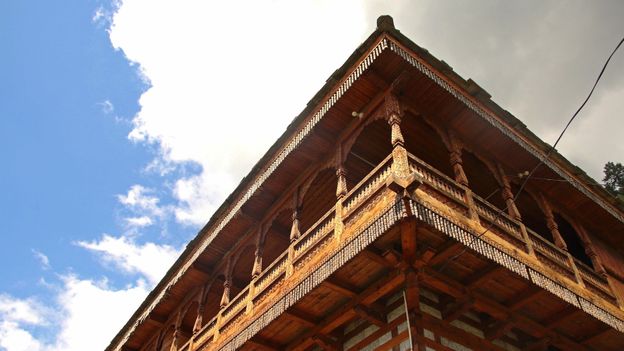

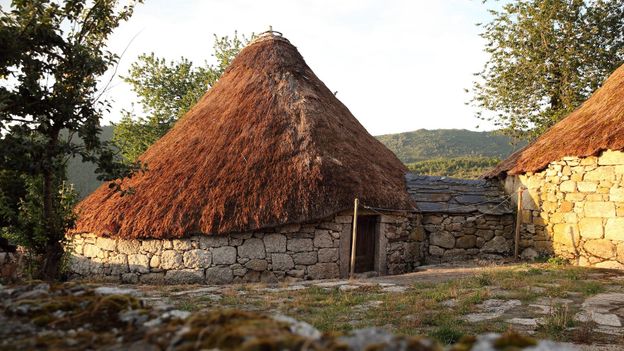
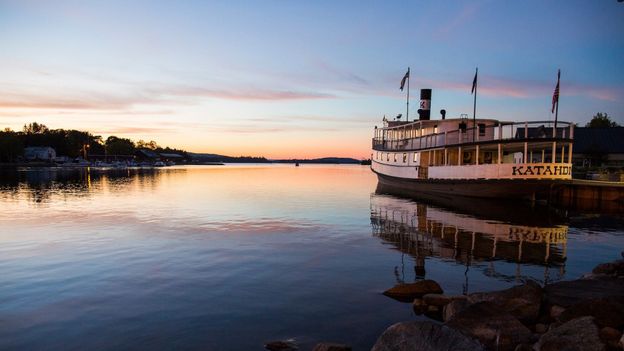
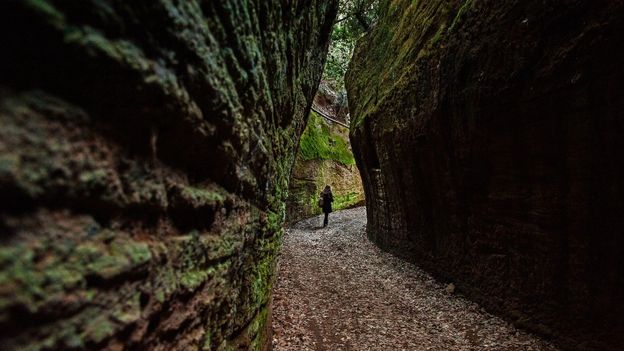




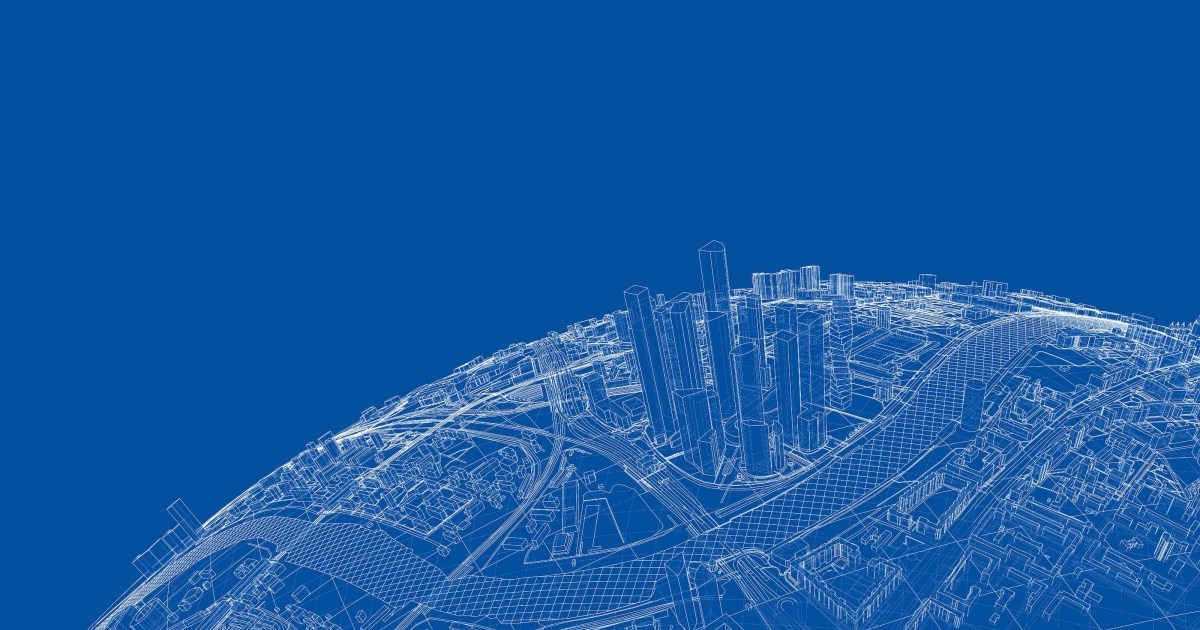
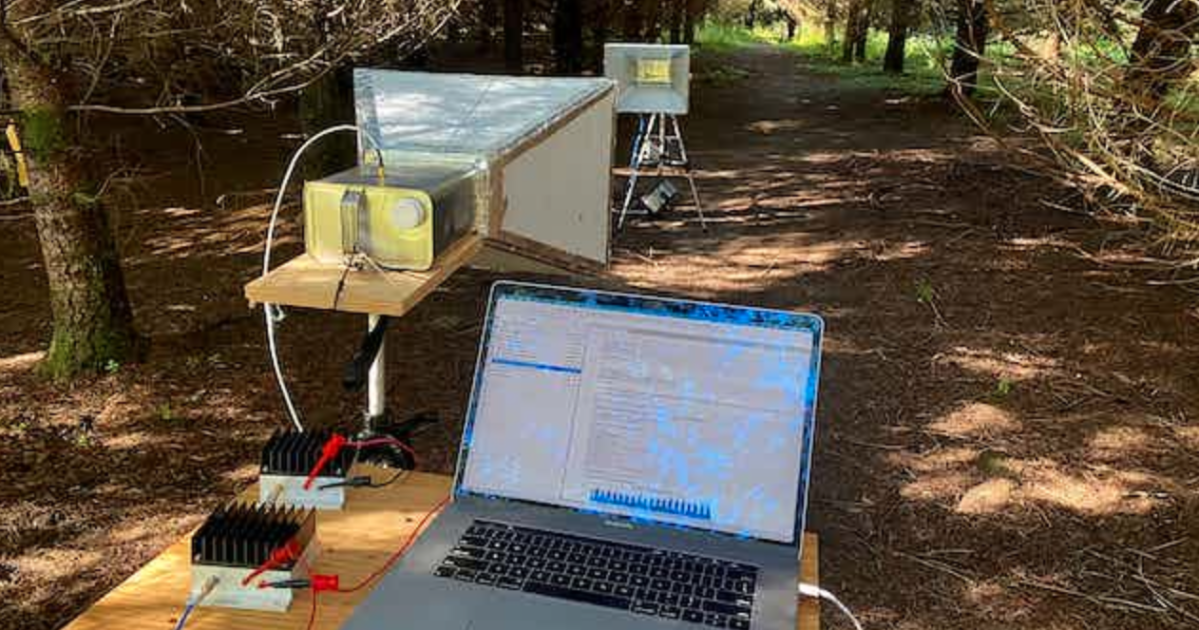









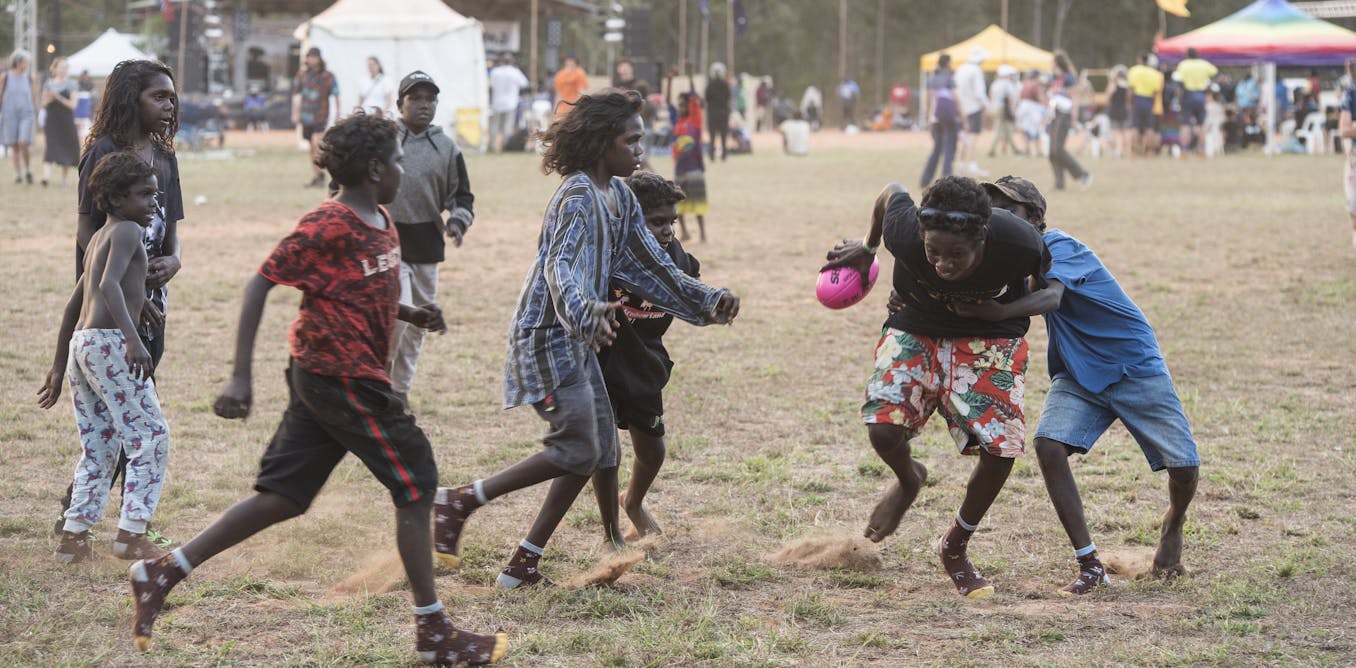

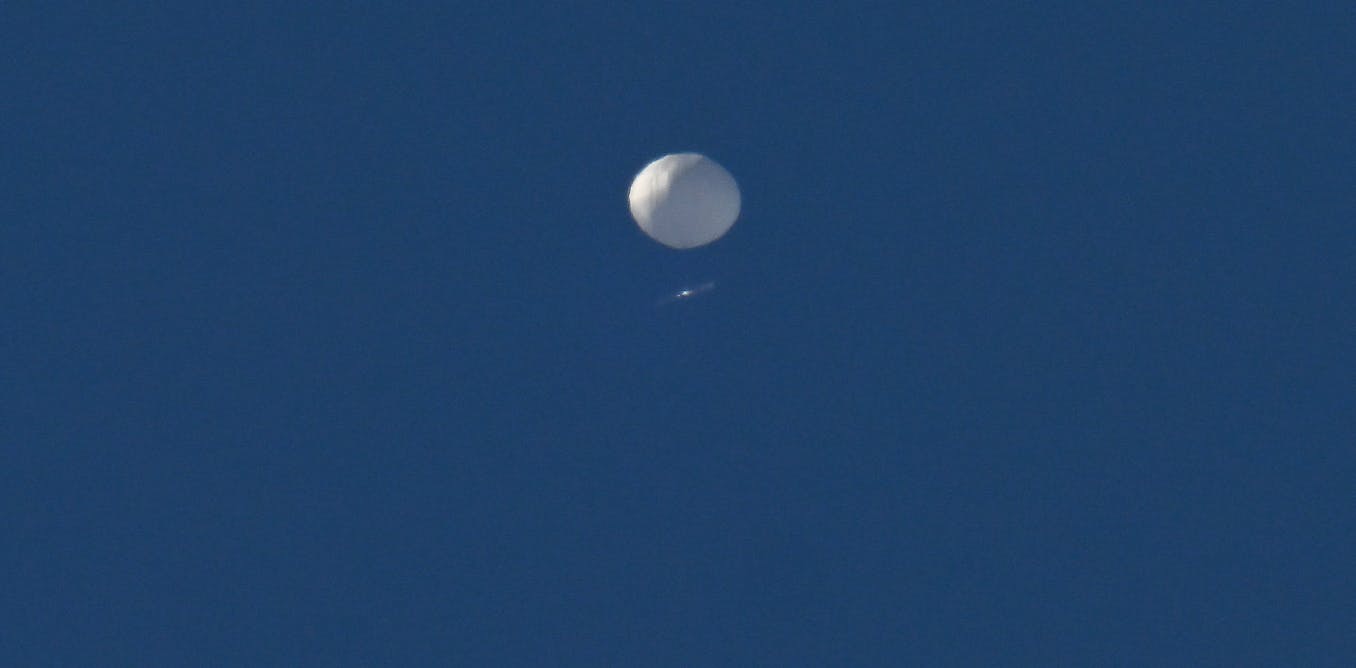






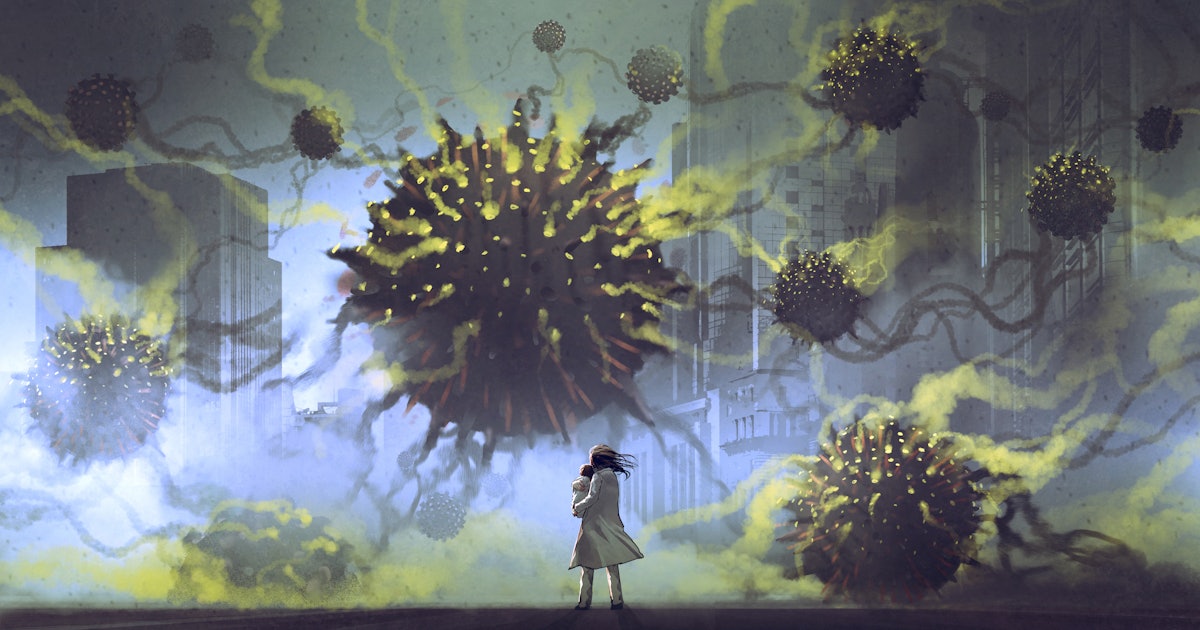




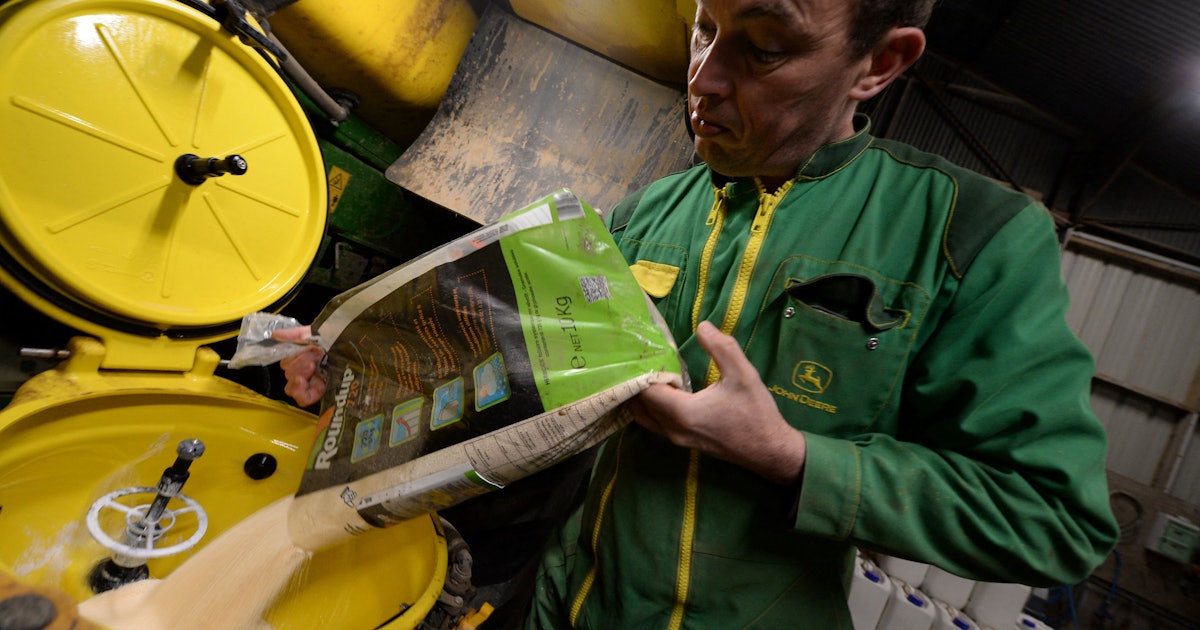

















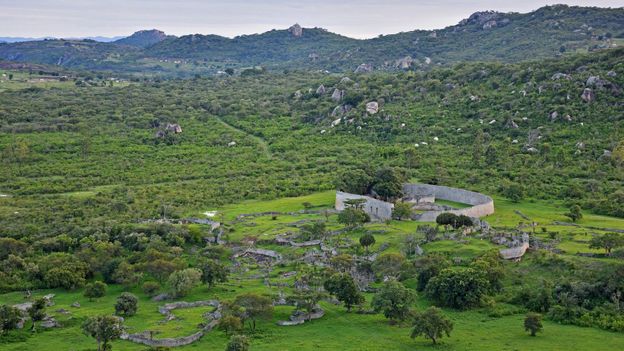
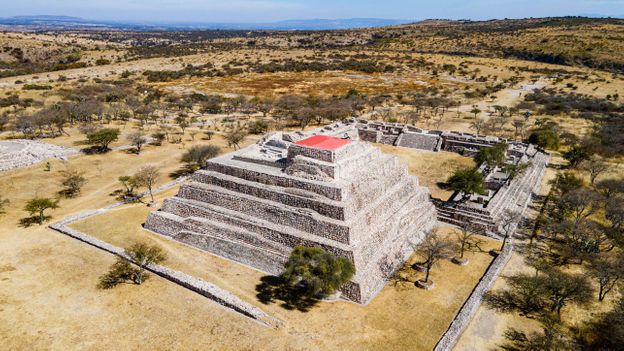
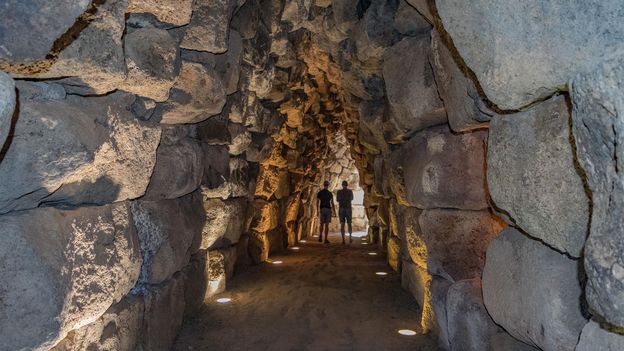

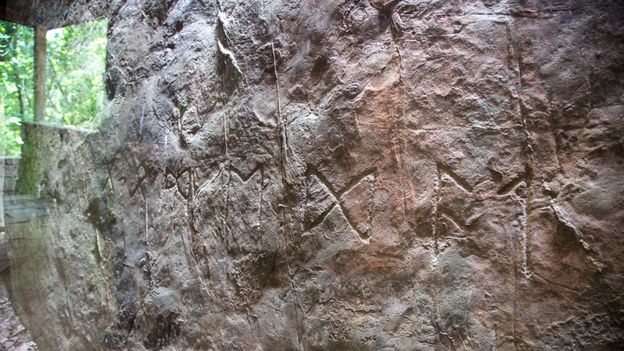
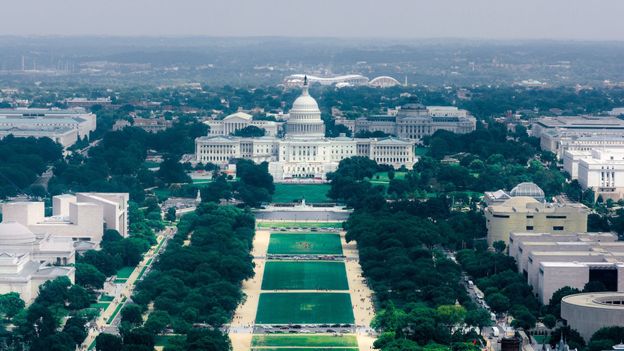
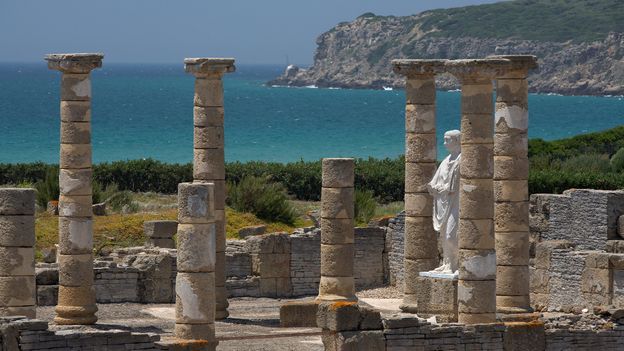

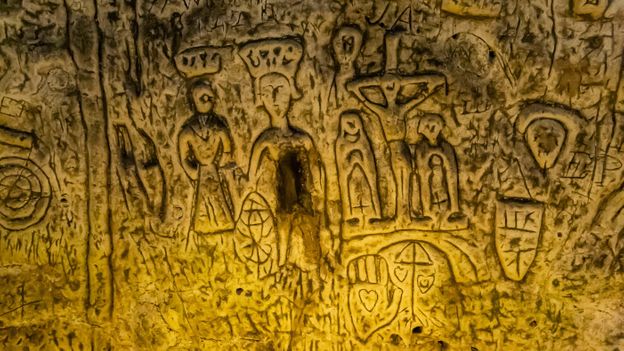


No comments:
Post a Comment